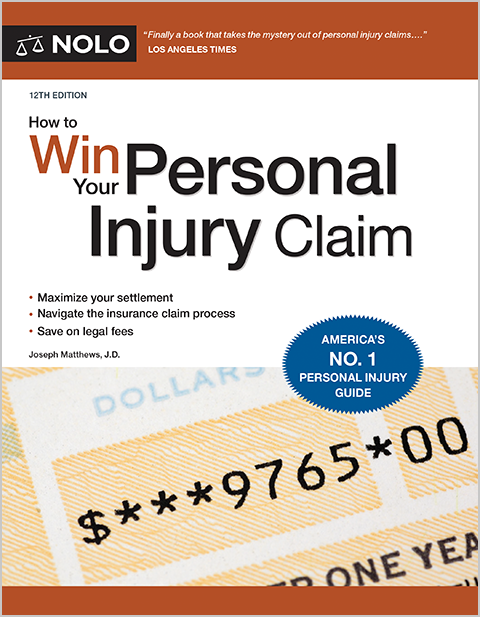Figuring out who's at fault for an accident usually means proving who was careless (or "negligent").
There's really no limit to the kinds of incidents that can cause injuries, but the fault concept behind most injury claims is pretty consistent. From traffic accidents to a slip and fall, legal responsibility for an accident usually depends on the answers to a few commonsense questions:
- Did the people involved in the accident act with reasonable care under the circumstances?
- Did anyone's carelessness contribute to the accident and the resulting injuries?
Another way of framing these questions is to ask, in the language of the law: "Was anyone negligent?" Let's look at the elements that make up the concept of negligence, some examples of negligence, and more.
What Is the "Duty of Care" in a Personal Injury Case?
In some situations, the question of whether someone is legally liable for another person's injuries may turn on whether a "duty of care" existed under the circumstances.
With a car accident, this element is almost always met, by the fact that anyone driving a vehicle has a legal obligation to act with proper care and caution at all times, with respect to anyone else using the roads, streets, and highways. So all drivers owe a duty of care to other drivers, passengers, motorcyclists, bicyclists, and pedestrians.
But the duty of care element isn't always so easily established in other kinds of personal injury claims. For instance, what if the person who was injured wasn't expected to be in the place where the accident happened?
What Is "Reasonable" When It Comes to Negligence?
In the basic negligence rule that everyone must take "reasonable care" to avoid injury to others, reasonable care can vary with time and place and with the relationship between people. So, the same conduct might be considered negligent in one situation, but not in another.
5 Keys to a Negligence Case
Regardless of how your accident happened, obtaining fair compensation for your injuries usually involves no more than application—with simple language and in a commonsense way—of five basic principles:
- If you show that you were careful and the other person was careless, the careless (or negligent) person must typically pay your injury damages (including cost of medical care to treat your injuries, your lost income, and the impact of your injury-related pain and suffering). If someone's liability insurance coverage applies to the accident, your chances of receiving fair compensation increase pretty significantly.
- If a negligent person causes an accident while working for someone else, the employer is also legally responsible (under a "vicarious liability" or "vicarious negligence" theory, which we'll cover in the next section).
- If an accident is caused by dangerous property or by a defective product, the owner of the property or the maker or seller of the product is usually liable regardless of whether they actually created the danger or defect.
- If you were also careless in connection with your own injuries, your right to be compensated is usually reduced to the extent your carelessness was responsible for the accident—your comparative negligence (discussed in the next section).
- "Proving" negligence just means making a reasonable argument that the other person's carelessness caused your injuries, and backing up this position with the right documentation, witness statements, and other evidence. Learn more about proving fault in an injury case.
Are There Different Types of Negligence?
In a sense, yes, there are different types of negligence. Or it might be more accurate to say that the concept of negligence is sometimes applied in different ways in personal injury claims. Let's look at a few examples.
Ordinary Negligence
Ordinary negligence might be described as run-of-the-mill carelessness: A driver making a right turn on a red light without properly considering the speed of the vehicle coming towards him; grocery store employees not noticing a spill in the dairy aisle until a customer slips and falls because of it.
Contributory and Comparative Negligence
Contributory negligence and comparative negligence are legal concepts that apply when the person bringing the injury claim might share some level of fault for the underlying accident or incident. The specifics vary according to the rule followed in a particular state.
For example, in a "pure comparative negligence" state, when a personal injury plaintiff bears some amount of liability for their own injuries, the amount the plaintiff can receive from other at-fault parties will be reduced by a percentage that's equal to the plaintiff's share of fault. Learn more about shared negligence in personal injury cases.
Vicarious Negligence
Vicarious negligence (or vicarious liability) comes into play when one person's negligence can be passed on to another party (which could be a person or a business). In the store slip and fall example above, the store owner would be vicariously negligent for the store employees' failure to spot and clean up the dairy aisle spill within a reasonable amount of time.
Gross Negligence
Gross negligence is a level of fault that goes well beyond ordinary carelessness, and usually includes recklessness or extreme disregard for other people's safety. Driving a few hours over the speed limit and causing a car accident would be considered negligent; driving 80 miles per hour in a school zone and causing a crash would be considered gross negligence. In situations where a defendant's conduct amounts to gross negligence, punitive damages might be possible.
Next Steps After an Accident or Injury
If you can apply the basic rules we've discussed here to your accident, and you're comfortable handling the injury claim process on your own, you can negotiate a fair settlement of your case. If you're getting pushback from the other party or their insurance company, or you just want to make sure your claim is in experienced hands, it might make sense to discuss your situation with a legal professional.
Learn more about how a lawyer can help with your personal injury claim, and get tips on finding the right personal injury attorney.
For a definitive guide to each step of the claim process, get How to Win Your Personal Injury Claim by Joseph L. Matthews (Nolo).


